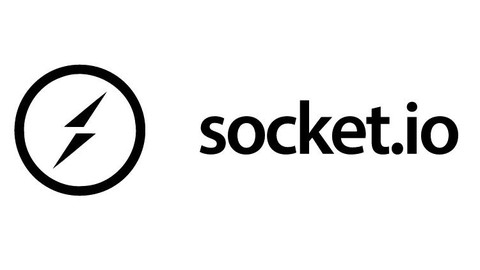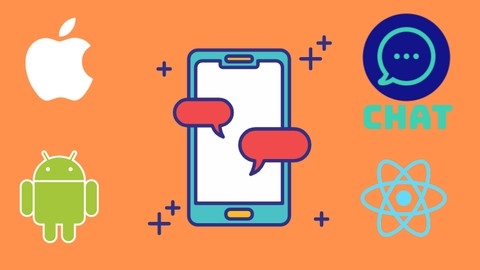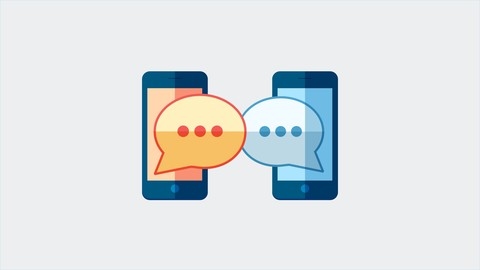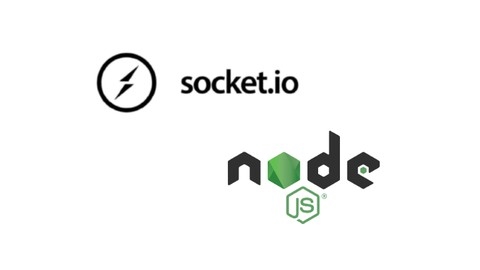Socket.IO is a powerful JavaScript library that enables real-time, bidirectional communication between web clients and servers.
It’s a game-changer for building dynamic, interactive applications like chat apps, online games, and collaborative tools.
By learning Socket.IO, you can create engaging user experiences and unlock a whole new level of interactivity in your web projects.
You’ll be able to build applications that respond instantly to user input, update information in real-time, and create a seamless, connected experience.
Finding the right Socket.IO course on Udemy, however, can be like navigating a maze.
With so many options, it’s tough to know which course will truly equip you with the skills and knowledge you need.
You’re looking for a course that not only covers the fundamentals but also provides hands-on experience and practical examples to help you solidify your understanding.
Based on our in-depth analysis, the best Socket.IO course overall on Udemy is SocketIO v4, with websockets - the 2024 details.
This course provides a comprehensive and up-to-date exploration of Socket.IO, covering everything from basic setup to advanced concepts like namespaces and rooms.
The hands-on projects, including building a chat application and a multiplayer game, are invaluable for applying your knowledge and building real-world skills.
This is just one of the many excellent Socket.IO courses available on Udemy.
If you’re looking for something more specific to your needs or learning style, we’ve got you covered.
Keep reading to discover our top recommendations for beginners, intermediate learners, and even those looking to build specific types of applications with Socket.IO.
SocketIO v4, with websockets - the 2024 details.
This Socket.io course equips you with the ability to craft real-time web applications, focusing on version 4.
You’ll begin by grasping the foundations of websockets, delving into TCP/UDP and networking concepts.
You’ll directly compare HTTP and Websockets to understand their strengths and weaknesses.
This foundation leads you into Socket.io, where you’ll explore core concepts like namespaces, rooms, and how to handle events effectively.
You’ll solidify your understanding by constructing a chat application using Socket.io, which acts as a stepping stone to building a more intricate Slack clone.
This project dives into namespaces and rooms, providing the tools to manage multiple chat channels and user groups.
The course emphasizes building a robust and scalable application, preparing you for real-world scenarios.
You’ll then transition to creating a multiplayer game similar to Agar.io, applying your Socket.io knowledge to synchronize player movements, handle collisions, and implement a competitive leaderboard.
You’ll even learn how to use React, the cluster module, and Redis to construct a performance monitoring tool for your applications.
This tool will grant you insights into your app’s resource usage, including CPU load and memory consumption, by pulling performance data and visualizing it.
Socket.IO Chat App in React Native for iOS/Android
This course teaches you how to build a chat app from scratch, covering everything from setting up your development environment to managing complex user interactions.
You begin by installing essential tools like Node.js, Visual Studio Code, and React Native using Expo.
The course guides you through building the backend with Socket.io, allowing real-time communication in your app.
You learn to connect your React Native app to this backend, send and receive messages, and even add user IDs for security.
You then dive into creating a user-friendly interface using Gifted Chat.
This library helps you build a modern chat screen, handle user input through TextInput, and ensure your app works smoothly on both Android and iOS devices using KeyboardAvoidingView.
The course goes beyond basic chat functionality, teaching you to add a JoinScreen where users enter their usernames before joining the chat.
You work with components like FlatList and TouchableOpacity to design a visually appealing and interactive user experience.
You then explore advanced concepts like navigation and state management.
With react-navigation, you learn to seamlessly transition between different screens, such as a friend list and a chat screen.
The course introduces Redux, a powerful tool for managing your app’s data.
You discover how to use Redux to keep track of online users, manage conversations, and ensure a smooth flow of information throughout your application.
Socket.IO Project - Build a Chat App
This Socket.IO course teaches you how to build a chat application from start to finish.
You begin by setting up your project and connecting to a Mongo database to store important information.
Then you dive into building the chat application itself using Socket.IO.
You learn how to create the HTML structure of your chat, including adding styling.
You will learn how to implement common features found in chat applications.
You will discover how to allow users to log in and out, view who is online, and participate in public chats.
The course also covers the intricacies of private chats, where two users can directly message each other.
You learn how to create notifications to alert users of new messages.
You will also address the complexities of private chats, such as handling situations where a second user restarts a conversation.
The course teaches you how to build a robust and scalable chat application.
You discover how to manage chat rooms, handle duplicate private chat windows, and refactor code for efficiency.
Socket.IO Practical Bootcamp - Quick Start for Beginners
This Socket.IO Bootcamp will teach you how to build real-time applications.
You will start by learning the basics of Socket.IO and how it differs from WebSockets.
The course then guides you through building a chat application, first using traditional HTTP methods, and then using Socket.IO.
Through this hands-on experience, you will understand the difference in real-time communication between these methods.
You will learn how to set up your development environment using Node.js to create an HTTP server.
Using JavaScript, you will build the client-side user interface with HTML, creating event listeners for actions like sending messages, inputting names, and joining chat rooms.
You will use Socket.IO to broadcast messages to everyone connected to the server, including private direct messages.
The course covers advanced features like Socket.IO Rooms, which allow users to join specific chat rooms.
You will learn how to create and manage these rooms using JavaScript and Socket.IO.
You will also learn about Socket.IO Namespaces, which allow you to organize your application’s code by creating separate sections for different functionalities.
The course concludes with practical exercises and a quiz to solidify your understanding.
Socket IO & Websocket For Beginners In 7 Simple Steps
This course begins by teaching you the basics of Socket.IO and how it compares to traditional WebSockets.
You will learn when using Socket.IO is the right choice for your projects.
The course covers Express.js, a popular framework for building Node.js web applications.
You even get to build your first Express app!
The course then teaches you how to install Socket.IO on both the client and server sides.
You will start with a simple “Hello World” example to understand message broadcasting.
You will explore Socket.IO events, learning how to handle them and use them in real-world applications.
You can test your understanding of event handling through code quizzes.
Next, you will learn about broadcasting messages, namespaces, and rooms within Socket.IO.
The course will guide you through building a chatroom from scratch, covering everything from frontend development with HTML, CSS, and JavaScript to backend development using Express and Socket.IO.
SocketIo React Node Public and Private Chat App
This course teaches you how to build a chat app from scratch using technologies like JavaScript, React, Node.js, and Socket IO.
You start with the basics, setting up your client and server environments.
You learn how websockets work—the technology that makes real-time communication possible.
The course doesn’t assume you’re an expert; it guides you through debugging connection issues and understanding the core concepts.
You then dive into building the chat app itself, starting with a public chat room.
You learn to use Socket IO to handle user input, send and display messages instantly, and manage a list of active users.
You discover how to create a user-friendly interface with features like usernames and notifications for when users join or leave the chat.
The course then steps up to the challenge of private messaging.
You learn about advanced concepts like Socket IO middleware, which allows you to add custom functions to your application.
You discover how to manage user connections, identify users with specific properties for private messaging, and add features like typing indicators, making your chat app feel more dynamic and responsive.
Finally, you learn how to deploy your app using platforms like GitHub and Digital Ocean, setting up a Node.js server and using NGINX for optimized performance.
You essentially take your app from a development environment to a live, working product.
The Premier SOCKET IO V4 Masterclass: Real Time Web Apps
This Socket.IO v4 Masterclass guides you from Socket.IO newbie to confident developer.
You start by comparing Socket.IO to traditional HTTP requests and discover why Socket.IO is better for real-time apps.
You discover how to set up a project with Node.js and handle security features like CORS.
The course then covers the ins and outs of events, messages, and acknowledgements with Socket.IO.
You master broadcasting messages and learn to organize your application using rooms and namespaces.
Hands-on coding challenges let you put your knowledge into practice.
You build a chat app from the ground up, using Socket.IO to create a real-time user experience.
You also create a stock tracking app, working with Python and Flask-SocketIO to pull in live data.
Along the way, you discover how to test your projects with tools like Mocha and Jest.
You’ll even explore advanced techniques like ensuring reliability and managing offline behavior in your Socket.IO apps.
The course doesn’t just teach you Socket.IO; it equips you to become a better developer.
You learn how to leverage resources like Google, Stack Overflow, and even Chat GPT to find solutions and improve your coding skills.
You examine the official Socket.IO documentation and learn how to navigate this valuable resource.
Finally, you explore Python and its role in Socket.IO development, building a real-time stock tracker app using Flask-SocketIO and the Alpha Vantage API.
Create a Twitter Clone with Node.js, Socket.IO and MongoDB
This course guides you through building a complete Twitter replica using Node.js, Socket.IO, and MongoDB.
You start with the fundamentals of Node.js, learning how to create a server and display content on web pages.
You’ll grasp routing, handling different types of web requests, and managing project resources using npm.
The course dives into using Express.js to structure your project and Pug to build dynamic web pages.
You’ll learn how to create a secure user registration and login system, including robust password handling and user session management.
You’ll work with MongoDB, a database for storing information, and use Mongoose to efficiently interact with it.
Get ready to build features that resemble Twitter’s functionality.
You’ll learn how to create a visually appealing and responsive user interface using Bootstrap and FontAwesome.
You’ll implement features like liking, retweeting, replying to posts, and even uploading profile pictures and cover photos using Cropper JS.
The course will teach you how to build real-time features like chat and notifications using Socket.IO, making your application dynamic and engaging.
You’ll even learn to build a search feature and a notification system that rivals Twitter’s, complete with real-time updates.








